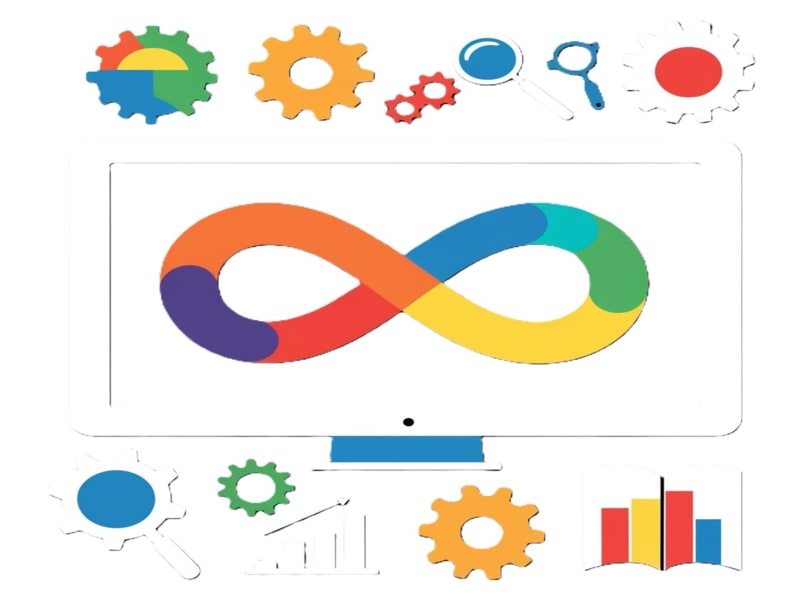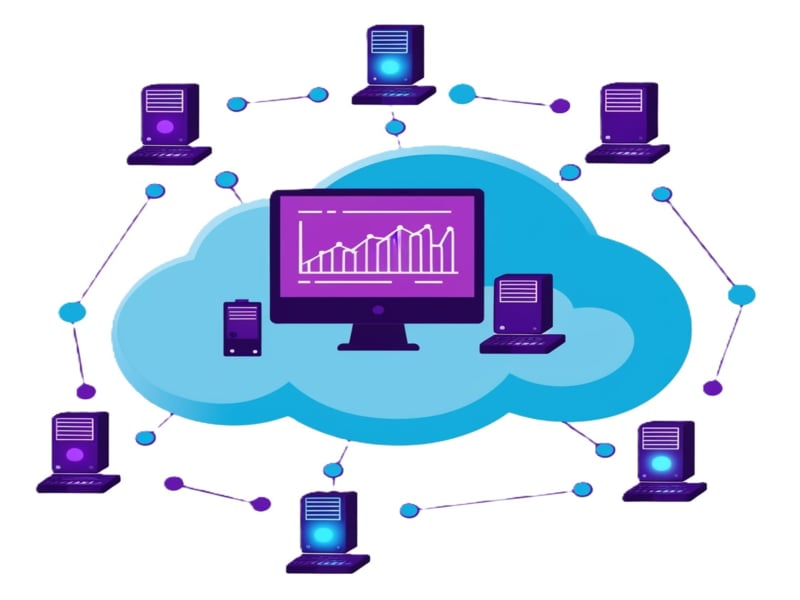Terraform Online Training
What is Terraform?
Terraform is an excellent open-source platform that empowers users to automate and manage their infrastructure using code effortlessly. It’s all about making your operations smoother and more efficient.
It simplifies the deployment and running of servers, databases, and load balancers by translating any command that needs to be executed into an API call for each resource provider.
Terraform comprises two primary components, including its Terraform Core and plugins. Terraform Core plays a vital role in the infrastructure-as-code process by expertly managing resource plan executions, resource graphs, state management, and configuration files. It’s truly the backbone of your infrastructure strategy.

Plugins facilitate additional tasks related to resource plan management or graphs. They contain binaries written using the Go programming language, which you can learn from our Terraform online courses.
Why learn the Terraform course?
Due to increasing demands for highly available infrastructure, Terraform has quickly become an essential skill among DevOps engineers and cloud architects.
As the use of cloud computing and automation continues to grow, IT professionals need to be equipped with the skills to manage resources efficiently, cost-effectively, and securely. By learning Terraform, they can gain the ability to define, create, and manage infrastructure resources using code, making it a vital skill to succeed in the modern IT landscape.
What Are the Prerequisites to Learn Terraform?
No prerequisites or prior knowledge are required to learn Terraform. If you have understanding in cloud background or at least some expertise in creating services in a public cloud like Azure, AWS, GCP, etc., it will become much easier for you to get into this technology.
Who could benefit from Terraform training?
Terraform courses provide essential knowledge and tools for managing IT infrastructure efficiently and effectively.
These courses provide key competencies that help DevOps engineers, cloud architects, system administrators, developers, and IT managers fully exploit their potential benefits.
DevOps engineers
DevOps engineers can use it to automate the deployment, configuration, and management of infrastructure on cloud platforms, simplifying infrastructure management tasks while increasing efficiencies.
Cloud architects
Cloud architects can benefit from using Terraform, which facilitates managing the infrastructure needs associated with cloud-based systems and applications.
Terraform has proven invaluable to cloud architects, helping them design and implement reliable yet scalable infrastructure solutions.
System administrators
Terraform provides system administrators with a tool for automating the deployment and configuration of IT resources, simplifying their management and maintenance.
Terraform can assist system administrators by saving time, reducing errors, and boosting productivity, becoming an indispensable asset to their work.
Developers
Developers Terraform simplifies developers’ lives by automating the deployment and configuration of the infrastructure needed for their apps.
This saves them time, minimises errors, and frees up resources to focus on writing, making Terraform an indispensable asset.
IT managers
Terraform can offer IT managers valuable skills and knowledge needed to automate infrastructure management and enhance IT operations.
This allows IT managers to reduce costs, increase reliability, and increase agility within their organisations – making it a powerful resource in their work.
The best way to learn terraform
Follow a systematic training process to become proficient in managing infrastructure as code using Terraform.
Start by building a solid foundation in IaC and cloud computing concepts. Enroll in a comprehensive online course or tutorial that covers both basic and advanced topics to gain a solid foundation in Terraform’s architecture, syntax, and best practices.

To gain hands-on experience, practice deploying infrastructure resources on a familiar cloud provider. Then, join the Terraform community to connect with other users and discuss your findings with them.
This approach will ensure that you gain both theoretical knowledge and practical experience, making you proficient in managing infrastructure as code using Terraform.

Terraform Training

Training Process of Terraform
To learn Terraform effectively, you must consider your learning style and current level of expertise. Here are a few strategies you can use to become proficient with the tool.
Taking a comprehensive online course
Starting with Terraform is a great choice. A comprehensive course is essential for building a solid foundation in Infrastructure as Code (IaC) and cloud concepts.
It should cover Terraform’s structure, syntax, best practices, and both beginner and advanced topics like resource management, module development, automation, version control, and security.
Study Terraform’s official documentation
Study Terraform’s official documentationand examples of Terraform code to deepen your understanding.
Begin with the getting started guide and progress to more advanced topics. Additionally, search for examples of Terraform code online and try to comprehend how they function. This will provide practical experience and reinforce your understanding of Terraform’s syntax and functions.
Practice deploying infrastructure resources on a cloud provider
you are familiar with to gain hands-on experience. Terraform supports multiple cloud providers, so choose one you know well and practice deploying infrastructure resources using Terraform. This will give you hands-on experience and boost your confidence.
Begin with simple resources, such as virtual machines or storage buckets, and gradually move on to more complex resources as you become more proficient.
Mode of Learning Terraform
The structure of a terraform training course will vary based on its specific goals and intended outcomes. CloudFormation and Terraform are infrastructure-as-code platforms that support the automation of AWS-based infrastructure, allowing you to define and manage resources using code-based templates.
Instructor-Led Live Training
Instructor-led live training is an interactive learning experience in which an expert guides you through the Terraform online course, providing a complete understanding of the technology.

The trainer, who is a working professional, can provide most of the sessions with practical scenarios for proper comprehension, and you can directly interact with the tutor in terraform class to acquire the necessary skills quickly.
This method also makes Learning Terraform easy. A specific topic is scheduled daily, allowing you to keep track of the syllabus and ensure nothing is missed.
Self-Guided Learning
The Self-paced training module is a learning option that provides you with a set of training videos and study materials for self-study.
This is more suitable for individuals with busy work schedules, as they can learn at their own pace, but it requires more effort and self-discipline.
Duration of Terraform training
Numerous variables can affect the length and depth of Terraform Training, including course complexity, training provider, and learners’ backgrounds in infrastructure such as code (IaC) or cloud platforms.
If you are new to infrastructure such as Code (IaC), cloud platforms, or terraform, training time may take longer toteach foundational concepts.
If you already know Terraform or similar tools (AWS CloudFormation or Ansible),your learning curve should be shorter. More complex topics can be tackled directly without unnecessary detours, and you can learn Terraform full course.
Competitors of Terraform
Due to the increased need for highly available, scalable, and expandable infrastructure, Terraform has quickly become an essential skill among DevOps and cloud engineers.
Terraform stands apart from competitors Crossplane and Pulumi by using APIs directly as internal code, thus providing direct interactions with provider APIs – such as turning HCL templates directly into AWS API calls.
Terraform’s primary competitors include Azure Management Tools, Morpheus, Cloud Health, Turbonomic, and CloudBot. Terraform utilises its command-line interface (CLI) for infrastructure management and communicating with state configuration files and providers.
Common CLI commands for Terraform include init, destroy, validate, apply and plan.
Advantages of Learning Terraform
Learning toterraform complete coursecan bring many advantages – here are just a few listed:
1. Improve multi-cloud infrastructure deployment
2. Automated Infrastructure Management
3. Continuous integration and delivery
4. Collaboration and Version Control

Improve multi-cloud infrastructure deployment
CloudFormation and Terraform enable you to use code to define, provision, and manage AWS infrastructure, providing a scalable and automated approach to resource management.
Terraform is open-source and can manage multiple cloud providers, including AWS, GCP, and Kubernetes. It uses the HCL and Hashi Corp languages, the latter developed by HashiCorp.
Automated Infrastructure Management
Terraform is a handy automated infrastructure management platform. This tool enables teams to define infrastructure as code and automate resource deployment, configuration and management across their infrastructure environment.
Terraform allows teams to enhance their infrastructure’s consistency, reliability, and maintainability while decreasing manual intervention requirements and delivering infrastructure services more quickly and accurately.
Continuous integration and delivery
Continuous Integration/Continuous Deployment (CI/CD) is a software development methodology that combines frequent code changes into a shared repository with automatic building, testing, and deployment to production.
Terraform can be integrated with a Continuous Integration and Continuous Deployment pipeline to automate infrastructure deployment and configuration, making changes more consistent, reliable and repeatable.
Collaboration and Version Control
Collaboration and Version Control When something goes wrong, to control and manage rollbacks effectively, it is necessary to recommit previous code versions into their version control system as newer and updated ones become available.
Terraform Enterprise has a state rollback feature for reverting to a previous state if a file is corrupted. To upgrade plugins, use Terraform with the dash upgrade option to check for and download provider updates.

Terraform Online Training

Job opportunities in Terraform
Terraform is an infrastructure-as-code (IaC) tool commonly used for automating infrastructure provisioning and management on cloud platforms like Amazon Web Services (AWS), Azure, and Google Cloud.
It offers numerous job opportunities for individuals with Terraform skills. Job roles might require Terraform expertise, such as those listed here:
DevOps Engineer
Cloud Engineer
Infrastructure Engineer
Cloud Architect and
Systems Administrator etc.,

These roles often involve responsibilities such as designing, building, and maintaining infrastructure as code using Terraform, collaborating with development and operations teams to automate infrastructure deployment and configuration, and ensuring the security and stability of the infrastructure.
Future Scope of Terraform
Terraform’s future looks bright as more companies embrace cloud and DevOps methods, multi-cloud systems, automation capabilities and support for multiple platforms and services.
As more companies embrace cloud-native architectures, Infrastructure as Code (IaC) and automation solutions like Terraform’s capabilities will likely increase.
Any system development or enhancement project must focus on security, scalability, and the capability to integrate with emerging technologies like AI, edge computing, and DevSecOps.
Flexibility, wide adoption, and continuous innovation ensure its relevance in today’s dynamic infrastructure management world.
Conclusion
Terraform is an efficient infrastructure as a code (IaC) tool used widely across cloud platforms like AWS, Azure, and Google Cloud to automate resource provisioning and management in these environments.
As such, this tool has proven popular among organisations seeking consistent, automated, and scalable management of their infrastructure resources. Furthermore, its ability to work across various cloud platforms and integrate with DevOps tools adds further appeal.
Terraform’s future looks bright as more organisations adopt cloud computing and DevOps practices while the need for IT automation increases.

Terraform should experience steady increases in security, scalability, and integration with emerging technologies like AI, edge computing, and DevSecOps; its flexible use also ensures its continued relevance in an ever-evolving infrastructure management world.
Individuals following a Terraform learning path can acquire the skills necessary to pursue various job opportunities, including roles as DevOps Engineer, Cloud Engineer, Infrastructure Engineer, Site Reliability Engineer, Cloud Architect, or Systems Administrator.
These roles typically entail designing, implementing, and maintaining infrastructure as code using Terraform, working closely with development and operations teams to automate infrastructure deployment and configuration processes, and assuring security and stability within their infrastructure environment.
Terraform is an attractive option for professionals looking to expand their cloud computing, DevOps, and infrastructure-as-code capabilities.

Terraform Course Price


Vanitha
Author